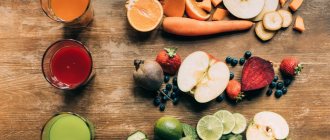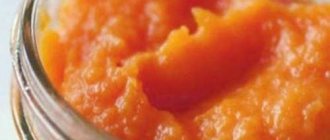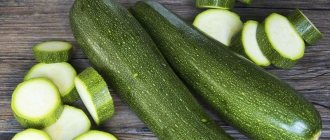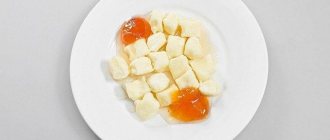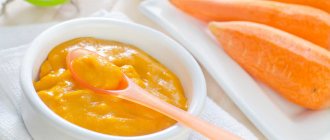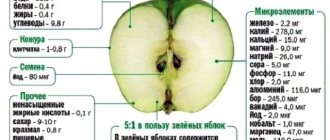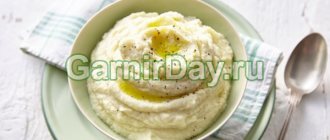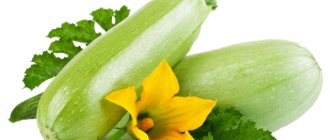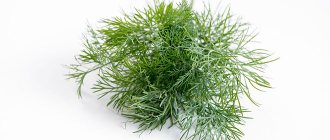When it comes time to introduce complementary foods, many parents are at a loss. At what age should the first complementary foods be given? Should you prepare baby food yourself or buy industrially produced products in jars? The book “Food for Little Ones” offers a modern European perspective on this issue and dispels many doubts. Here are some recipes for homemade vegetable and fruit purees and tips for storing them.
The puree feeding stage is not a strictly prescribed period that must last a fixed number of weeks. Some parents skip it altogether, while others believe that vegetable and fruit purees should be the basis of complementary feeding for several months. But in any case, purees are just the beginning, the first step on the path to “normal” food. As soon as the child is ready for this, it is very important to accustom him to solid foods, to food that can be handled and chewed.
Try making simple purees from one ingredient, and when your child gets used to them, turn your attention to more complex recipes.
If you are going to feed your baby purees, I recommend getting a stationary blender with a tall jug. Hand-held immersion blenders are great for making pureed soups or other fairly thin mixtures, but they don't always work well with thicker ones.
When making purees for children, there is no need to wear a white coat and a hair net, but it is still worth remembering about hygiene. In young children, the immune system has not yet strengthened, and they are more sensitive to viruses, and food poisoning is extremely dangerous for them. Plus, by peeling, cutting, and wiping fruits and vegetables, you give bacteria more room to feed and multiply. No need to panic, just follow some rules.
Basic hygiene rules when preparing purees
Cooled puree from boiled products can be kept in the refrigerator for 24 hours or frozen in small portions. The classic freezer container is an ice tray, but I prefer silicone molds for mini muffins. They have the perfect size for one serving of puree, and each one is very easy to take out. Thaw the puree in the refrigerator, then warm thoroughly and cool slightly before serving. You cannot reheat more than once.
You should not freeze fresh fruit puree, because when defrosting they will need to be reheated very much, and this is not very good.
Many vegetables and fruits need to be pureed with water. You can use breast milk or artificial milk instead - it will enrich the mixture with calories and nutrients. But if you are going to store the puree in the refrigerator or freezer, diluting it with milk is not very good from a sanitation point of view. Purees to be stored are best diluted with water - and the same water in which vegetables or fruits were prepared, because some of the vitamins have passed into it. It is better to make puree intended for freezing quite thick; and after defrosting and reheating, you can add fresh milk or fresh hot broth.
Rules for introducing a new product
Fruit puree is administered to bottle-fed children as early as 4 months, and to breast-fed children after six months of age. They begin to give it only after the child has mastered vegetable puree.
Experts say it's best to start with vegetables. They are rich in mineral and vitamin composition, and also contain more plant fiber. In addition, vegetable puree is low allergenic. After vegetables, the body will be ready to accept fruits.
For the first feeding, a dish with one component is suitable. This will help you determine whether you are allergic to the product or not. If, for example, a child was offered pear puree and a rash appeared, then it can easily be replaced with something else. After the monocomponent puree has been successfully mastered, you can give the child a puree of several fruits or together with berries.
Complementary foods are introduced gradually.
- A new product should be given once a week.
- It should be given in the first half of the day, before the main feeding with milk or formula.
- The serving should be equal to half a teaspoon.
- If the puree is too thick or concentrated, you can dilute it with water.
There is no need to introduce other foods during the week. You should carefully monitor the baby's behavior and condition. In the event that vomiting, diarrhea, or a rash appears, you need to stop feeding.
To start: one-ingredient puree
The introduction of complementary foods usually begins with this in order to monitor the child’s body’s reaction to new foods.
Apple or pear. I always steam them: this preserves the beneficial substances, and the puree turns out thicker and richer than from fruits boiled in water. Peel 2-3 apples or pears, remove core and cut into slices. Place in a steamer strainer or fine sieve set over a pan of gently simmering water. Cover and cook for 6-8 minutes, until tender. Puree. You will get 250–350 ml.
Apricots. Steaming apricots is an easy way to deal with the skin (you can cook peaches the same way). Halve 4-5 apricots and remove pits. Place cut side down in a single layer in a fine sieve and place over a pan of gently simmering water. Cover and cook for 5 minutes. Remove the sieve and strain the apricots through it (discard the skins). You will get about 100 ml of puree.
Polka dots. Boil a pot of water. Add 200 g of fresh or frozen peas, bring to a low boil and cook until soft (about 5 minutes frozen, a little longer fresh). Drain in a colander, reserving the water. Transfer the peas to a blender and puree them, diluting with water to the desired consistency. If you need a perfectly smooth puree for a very young child, rub the mixture through a sieve. Approximately 300 ml.
Pumpkin. Cut the pumpkin into 2 or 4 pieces and scrape out the seeds. Place cut side up in a deep baking tray and pour in half a glass of water. Cover loosely with foil and bake at 190°C until soft, 45–60 minutes (time depends on the size and type of pumpkin). Scrape out the pulp and mash into a puree, adding liquid if necessary. Half a butternut squash will yield approximately 300 ml of puree.
Where to begin?
Most often, the first fruit a baby tries is an apple. First it is given in the form of boiled puree. This choice is due to the fact that the green apple is hypoallergenic, and it contains many useful microelements for the child’s body:
- Firstly, it is iron, which is necessary for hematopoiesis.
- Secondly, an apple normalizes the amount of sugar in the blood.
- Improves the digestion process, increases appetite.
- Removes toxins from the body.
Despite all the advantages of this fruit, even it should be given with caution. When offering your little one a new fruit, always do it according to all the rules of complementary feeding. The first portion should be no more than a teaspoon; monitor the child’s reaction throughout the day; if an allergy appears, then postpone the introduction of this product for several weeks.
Pediatricians advise keeping a food diary. There you can indicate when and in what quantity you gave your baby a new dish, indicate his reaction to it.
The second on the list of fruits is usually the pear. It also contains many vitamins, is an excellent source of folic acid and can eliminate toxins, but unlike apples, it can cause colic.
Plums can be offered fresh or as prunes. In both cases, it will perfectly help with constipation.
Bananas begin to be offered after 8 months. Despite the fact that this fruit is foreign to Russia, it is absolutely hypoallergenic. However, bananas are quite difficult to digest. Therefore, it is not recommended for children prone to constipation. Also, in addition to useful microelements, bananas contain sugar.
When will the baby get acquainted with the listed fruits? You can offer him fruits such as apricot or peach. The main products can be diluted with cherry puree, red or black currants, and white cherries. However, all of them can cause diathesis; if the baby is prone to allergies, then wait a little with a variety of diet. The older the baby gets, the better his body copes with an unfamiliar menu.
Next step: mixed purees
When the child gets used to the simplest purees, move on to more complex options. Gradually make the puree thicker and richer by adding ingredients rich in proteins, carbohydrates and fats.
As soon as it seems to you that the child is ready for this, make the puree thicker, do not puree, but knead or chop the ingredients. To make your puree more filling, try these additions:
- before serving, add grated cheese, a little cream, butter or whole natural yogurt - if the child is already six months old;
- a hard-boiled and chopped egg - again, if the child is six months old;
- some finely chopped freshly cooked chicken or fish;
- boil rice or pasta with vegetables;
- If you are cooking vegetables in water, add red lentils.
Broccoli, potatoes and fish. Potatoes should not be ground in a blender or food processor - this will make them sticky. It is better to mash it by hand or add it to puree other vegetables. Bake 1 potato at 200°C for an hour until soft. Towards the end of baking, place 1 small fish fillet (such as pollock or mackerel) on a foil-lined baking sheet and place in the oven for 10 minutes. Break the fish into flakes, carefully removing the bones. Trim the tough stems off 250g of broccoli and place in a steamer or fine sieve set over a pan of simmering water. Cover and cook until soft, about 8 minutes. Cut the finished potatoes in half and scrape out the pulp, then mash. Either puree the fish and broccoli or chop it very finely. Mix with mashed potatoes, adding liquid if desired. Approximately 300 ml puree.
Spinach, spelled and onions. Place 50g of spelled (or pearl barley) in a small saucepan and cover with plenty of water. Bring to a boil and cook over high heat for about 20 minutes until fully cooked (barley takes longer to cook). Drain and reserve water. Wash 300 g of spinach and tear off the tough stems from the large leaves; leave the small ones whole. Place the spinach in a saucepan and place over medium heat (the remaining water on the leaves will suffice for cooking). Cover and let the spinach wilt - this will only take 3-4 minutes. Drain in a colander (but do not wring out). Finely chop 1 small onion. Heat 1 tbsp in the pan where you cooked the spinach. l. rapeseed or olive oil over medium heat and fry the onion for 10 minutes until soft. Grind the spelt, spinach and onion in a blender, adding another 1 tbsp. l. oils Dilute slightly with water from cooking spelled. Spelled will give the puree a nice, slightly lumpy consistency. Approximately 500 ml.
Chicken and salad. Cut 2 skinless, boneless chicken thighs into equal pieces.
Place them in a small saucepan and add enough water to barely cover the chicken. Bring to a boil, reduce heat and cook for 8 minutes. Meanwhile, coarsely chop 1 head of romaine lettuce. Add to chicken, stir and cover. Cook for another 3 minutes, tossing a couple of times, until the lettuce is completely wilted. Place everything together in a blender and puree. You will get approximately 300 ml.
Vegetable soup 2
Ingredients for 500 ml of water:
- 1 potato
- 100 g cauliflower
- 100 g white cabbage
- 1 carrot
Wash all the vegetables, chop them and place them in boiling water one by one. First we put the carrots, then the potatoes, then the cauliflower. We put white cabbage at the very end. Cook until done. We rub the vegetables through a sieve or blend them in a blender with the addition of broth. Can be served with homemade croutons and herbs. For older children, you can add garlic.
Fruit puree
As soon as the child is ready for this, make the puree thicker, do not puree, but knead or chop the ingredients. To make your puree more filling, try the following:
- before serving, add cream or natural yoghurt - if the child is already six months old;
- mix fruit puree with porridge - oatmeal or other cereal;
- add a little spice - for example, a pinch of cinnamon or a few drops of vanilla extract.
Citrus fruits and berries can cause allergies. Give them along with fruits that you know won't cause problems for your child to monitor the reaction.
Apple and dried apricots . Place 100 g of dried apricots in a small saucepan, cover with water and leave overnight. Peel 2 apples, remove core and cut into slices. Add dried apricots to the pan, bring to a boil and cook for 10 minutes, stirring frequently, until soft. Puree. You will get approximately 300 ml.
Pear and papaya. If you have a couple of soft, ripe pears, there is no need to boil them - just peel and coarsely chop them. Peel, core and coarsely chop firm pears, then place in a steamer or fine sieve set over a pan of gently simmering water. Cover and simmer 10 minutes, until tender; let cool. Halve the papaya, remove the seeds, scoop out the pulp and mix with the pears, then puree. Since the puree contains fresh fruit, it is best to serve it immediately. Approximately 300 ml.
Berries and banana. Mash 200 g of a mixture of berries - strawberries, blueberries, raspberries, blackberries, etc. If you used berries with large seeds, such as raspberries, rub them through a sieve. Mix with 1 ripe banana, cut into pieces, and puree. Since there is fresh fruit, it is best to serve the puree right away. Approximately 300 ml.
Carrot and potato puree
Prepare regular mashed potatoes without oil. Peel the carrots, grate them and simmer with butter and vegetable broth - about 1 tsp is required for 200 g of carrots. butter and 150 g of broth. When the carrots become very soft, rub them through a sieve, and then place them on a plate; place the potato puree on the other half. Let the child choose whether to mix two types of purees or eat them separately!
Recipe 1: Vegetable puree
Many people know how to prepare mashed potatoes, but not everyone knows how to serve it in an interesting way. This recipe for a popular vegetable puree describes the recipe for the dish and the further method of serving. To prepare you will need potatoes, green peas and milk.
- Potatoes - several pieces;
- 1-2 tbsp. l. green peas;
- 12 g butter;
- Milk - 40-45 ml;
- Salt.
Wash the potatoes, peel them and cut into pieces as desired. Pour water over the potatoes and let them cook. As soon as the potatoes are completely cooked, pour the broth into a separate glass and crush the potatoes themselves with a potato masher. Heat the milk and pour it into the potatoes. Throw in a piece of butter. Continue kneading everything until smooth. Boil green peas in the drained broth and add to the potatoes. Mix all ingredients. If the puree is too difficult to mix, you can add a little hot broth. Salt the vegetable puree to taste.
Vegetable puree - preparing food and dishes
To prepare vegetable puree, you need to prepare a set of kitchen utensils, including the following items: a saucepan, a frying pan, a bowl, vegetable cutters and peelers, a grater, a colander, a sieve, a knife, a cutting board and a blender. You may also need a steamer to pre-cook some ingredients. Vegetable puree is served on regular serving plates along with the main course.
Preparation of products consists of the following steps:
— Washing and further cleaning of vegetables. If necessary, you need to remove the seeds and stalks. Carrots and beets must be carefully scraped; it is better to remove the skin from tomatoes so that it does not get caught in the puree;
— Washing and chopping greens;
— Preparation of salt, pepper and other spices;
— Preparing additional ingredients: softening butter, heating milk, etc.
Vegetable puree recipes:
Complementary feeding: we prepare it ourselves!
How to prepare, store and reheat baby food at home
And our series on different types of complementary foods ends with the topic of self-cooking. It would seem that there is nothing simpler than homemade dishes: you cook them, chop them in a blender, and serve them out. But the modern mother is not looking for easy ways, she goes to the forum and asks a lot of questions: how best to cook, what to chop, what to add, how to preserve. She also reads about scary winter vegetables that have nothing healthy in them, and then they scare her about genetically modified foods...
But if you still want to prepare complementary foods yourself - or have the opportunity to use your harvest, this collection of tips may be useful.
